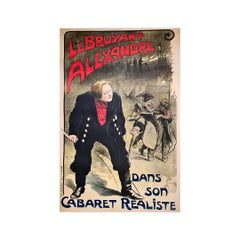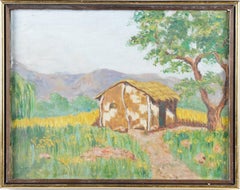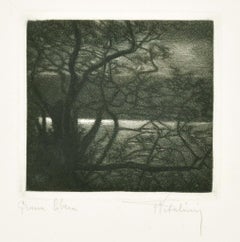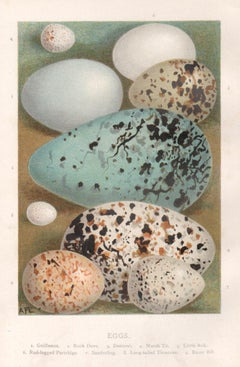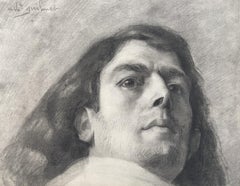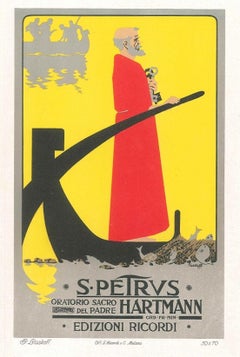Early 1900s Art
to
332
880
443
281
175
160
Overall Width
to
Overall Height
to
7,525
21,087
157,328
233,669
1,954
2,290
4,852
6,395
5,756
13,027
19,159
25,441
17,970
13,700
5,359
295
239
112
100
11
9
7
5
4
4
1
1
1,017
774
49
1,109
636
395
341
330
186
107
103
102
90
86
80
77
77
74
74
73
72
67
64
879
614
444
358
356
59
45
31
25
18
793
233
1,026
847
Period: Early 1900s
Art nouveau style poster presenting Le Bruyant Alexandre - Cabaret - Paris
Located in PARIS, FR
Art nouveau style poster from the beginning of the 20th century presenting Le Bruyant Alexandre in his realistic cabaret printed by the Thill printing ho...
Category
Art Nouveau Early 1900s Art
Materials
Paper, Linen, Lithograph
Antique Tropical 19th Century Landscape Original Oil Painting Flower Path
Located in Buffalo, NY
Antique modernist landscape painting. Oil on canvas. Housed in a period frame. Image size, 17.5L x 13.75H. Signed.
Category
Modern Early 1900s Art
Materials
Canvas, Oil
$296 Sale Price
25% Off
Landscape - Etching on Paper by Francesco Vitalini - 1904
Located in Roma, IT
Landscape is an original etching artwork realized in the 1904 ca. by Italian artist Francesco Vitalini.
Hand-signed on the lower right in pencil.
The State of preservation is very ...
Category
Early 1900s Art
Materials
Etching
$414 Sale Price
30% Off
Eggs, natural history chromolithograph, circa 1900
Located in Melbourne, Victoria
'Eggs'
Antique English natural history chromolithograph. Key to eggs below the image. Tiny numbers in the margins to identify the eggs.
Sheet 19cm by 12.5cm, image 13cm by 9.5cm.
Category
Naturalistic Early 1900s Art
Materials
Lithograph
Albert Paul Guilmet (1879-1922) Portrait of a man, signed drawing
Located in Paris, FR
Albert Paul Guilmet (1879-1922)
Portrait of a man,
signed upper left
charcoal on paper
26.5 x 33,8 cm
Framed : 43.5 x 52 cm
Little is known about Abert Paul Guilmet, apart from th...
Category
Early 1900s Art
Materials
Charcoal
S. Petrus - Vintage Advertising Lithograph by A. Terzi - 1900 ca.
Located in Roma, IT
Image dimensions: 26x18.2 cm.
S. Petrus is a beautiful colored lithograph on cardboard, realized by the Polish illustrator Franz Laskoff and printed aro...
Category
Early 1900s Art
Materials
Lithograph
Admission to the Universal Exhibition in Paris - Original Document - 1900
Located in Roma, IT
Certificate of Admission to the Universal Exhibition in Paris, 1900 is an original document on paper.
Rare documentation of one of the most impor...
Category
Modern Early 1900s Art
Materials
Paper
H.O. Miethke Das Werk folio "Beethovan Frieze 1 & 2" set of collotype prints
Located in Palm Beach, FL
DAS WERK GUSTAV KLIMTS, a portfolio of 50 prints, ten of which are multicolor collotypes on chine colle paper laid down on hand-made heavy cream wove paper with deckled edges; under ...
Category
Vienna Secession Early 1900s Art
Materials
Paper
Il Kaiser - Original China Ink/ Tempera by Gabriele Galantara - 1908
Located in Roma, IT
Il Kaiser is an original drawing in China ink and tempera on creamy cardboard realized by Gabriele Galantara (1865-1937).
In good conditions.
This artwotk presents on the back som...
Category
Modern Early 1900s Art
Materials
Ink, Tempera
Circa 1900 Original poster by Dudley Hardy : An Artist's Model
By Dudley Hardy
Located in PARIS, FR
Beautiful poster of the beginning of the XIXth century by Dudley Hardy : An Artist's Model - George Edwardes company
Dudley Hardy (1867 - 1922) was an English painter and illustrator.
His interest in illustration led him to produce posters of French graphic influence, including the Yellow Girl...
Category
Art Nouveau Early 1900s Art
Materials
Paper, Lithograph, Linen
Original Vintage Train Poster Onival sur Mer by Lanz c1905
Located in Boca Raton, FL
This bright, vintage poster advertises travel to the seaside resort of Onival sur Mer, which is located in northwestern France. It says that it is just three and a half hours from Pa...
Category
Early 1900s Art
Materials
Lithograph
"La Neige (soleil couchant)" original etching
Located in Henderson, NV
Medium: original etching and drypoint. Printed in 1909 and published in Paris by Henri Floury. Plate size: 8 1/4 x 5 5/8 inches (212 x 143 mm). Not signed.
Category
Early 1900s Art
Materials
Etching
Lelong's circa 1900 original advertising poster for "La Petite Gironde" Press
Located in PARIS, FR
Lelong's circa 1900 original advertising poster for "La Petite Gironde" is a historical gem that sheds light on the influential role this provincial newspaper played during its time....
Category
Early 1900s Art
Materials
Lithograph, Paper, Linen
Le Jardin de Lagny - Garden with young girl Post-impressionist
Located in Miami, FL
Le Jardin de Lagny
Provenance: Arthur Tooth, London Radon Gallery, NY
This beautiful evocation of a lyrical French landscape is a fine example of of Po...
Category
Post-Impressionist Early 1900s Art
Materials
Canvas, Oil
$212,000 Sale Price
20% Off
Circa 1900 Original poster after Henri Gervex for the railways of Orleans
By Henri Gervex
Located in PARIS, FR
Beautiful poster after Henri Gervex for the railways of Orleans and more precisely the communes of Alvignac and Miers in the Lot and the line from Paris to Toulouse by Capdenac and t...
Category
Early 1900s Art
Materials
Lithograph, Paper, Linen
A white and tan terrier; and A white and light brown terrier
Located in London, GB
Both pictures unsigned.
Presented in period water-gilded Watts-style frames, these two works are highly decorative and full of character, and excellent examples of Edward Aistrop's ...
Category
Realist Early 1900s Art
Materials
Oil, Board
Poster by Hugo d'Alésie Rocamadour et Montvalent Chemin de fer d'Orléans
Located in PARIS, FR
F. Hugo d'Alesi's artistic legacy is profound, particularly in the late 19th century, where he crafted numerous tourist posters for railway companies. His oeuvre extended beyond rail...
Category
Early 1900s Art
Materials
Paper, Lithograph, Linen
Le Quadrille au Moulin Rouge Circa 1900 Original Poster - Paris Cabaret Dance
Located in PARIS, FR
Painter, draughtsman and poster artist, Louis Abel-Truchet (1857-1918) is, along with Henri de Toulouse-Lautrec, one of the most famous representatives of Parisian life at the end of...
Category
Early 1900s Art
Materials
Linen, Paper, Lithograph
H.O. Miethke Das Werk folio "Cottage Garden with Crucifix" collotype print
Located in Palm Beach, FL
DAS WERK GUSTAV KLIMTS, a portfolio of 50 prints, ten of which are multicolor collotypes on chine colle paper laid down on hand-made heavy cream wove paper with deckled edges; under ...
Category
Vienna Secession Early 1900s Art
Materials
Paper
Merieanna
Located in Fairlawn, OH
Merieanna
Etching and aquatint, c. 1900
Signed by the artist in pencil lower right
Titled in pencil lower right corner of sheet
Annotated "4" lower left below image
Publisher's dryst...
Category
Impressionist Early 1900s Art
Materials
Aquatint
Secessionist Geometric Urn by Paul Dachsel c. 1900
By Paul Dachsel
Located in Chicago, IL
Whereas earlier Art Nouveau pottery focused on asymmetrical design to represent the wild and unpredictable aspects of nature, forward-thinking artists such as Paul Dachsel and those of the Vienna Secession also explored the geometric elements of nature. Four-handled blue and gray urn...
Category
Art Nouveau Early 1900s Art
Materials
Ceramic
Original poster of the Chemins de fer de l'Est promoting travel in Switzerland
Located in PARIS, FR
Original old poster of the Chemins de fer de l'Est promoting travel in Switzerland, illustrated by E. Bourgeois. Eugène Victor Bourgeois (1855 - 1909) was a French painter, illustrator and poster artist.
Self-taught painter, Eugene Victor Bourgeois began at the Salon of 1874. He exhibited there in 1880, as well as at the Salon des artistes français in 1881 where he obtained a medal of honor that year, then a 3rd class medal in 18851. He won a bronze medal at the Universal Exhibition of 1889 and at the one of 1900.
The Compagnie des chemins de fer de l'Est was a limited company created in 1845 under the name Compagnie du chemin de fer de Paris à Strasbourg. The name was changed in 1854 after other companies were bought out and new concessions were obtained. It was one of the six major French railroad companies nationalized on January 1, 1938 to form the Société nationale des chemins de fer français.
Chemins de Fer de l'Est
Switzerland, Gorges de...
Category
Early 1900s Art
Materials
Paper, Linen, Lithograph
A Daughter of the South
Located in Greenville, DE
Number 382 in the Schoonover raisonné. Signed and dated 1909. Beautifully reframed in custom 23 karat gold leaf frame.
Category
Realist Early 1900s Art
Materials
Canvas, Oil
Reclining Nude Holding a Necklace
Located in Fairlawn, OH
Reclining Nude Holding a Necklace
Lithograph, c. 1908
Signed in pencil lower right (see photo)
Edition: c. 15
Reference: Belleroche No. 525
Condition: Excellent
Image: 16 3/4 x 20"
...
Category
Impressionist Early 1900s Art
Materials
Lithograph
C. 1900 Original Poster The Minster biggest magazine in the world by Max Cowper
By Max Cowper
Located in PARIS, FR
Max Cowper 🏴(1860-1911) was a Dundee born painter. He was employed as an illustrator for the Dundee Courier before moving to London around 1901 to join the staff of the ...
Category
Art Nouveau Early 1900s Art
Materials
Lithograph, Linen, Paper
Venice Scene by French Post-Impressionist early 20th Century oil on canvas
Located in New York, NY
Signature: Bottom right
Provenance
Galerie Marie Bruyer, France
Private collection, NY
Literature
Antoine Laurentin, Ferdinand du Puigaudeau, Catalogue raisonné de l’œuvre peint, V...
Category
Post-Impressionist Early 1900s Art
Materials
Oil, Canvas
Portrait of Jules Lenard - Woodcut by Paul Emile Colin - 1907
Located in Roma, IT
Woodcut print realized by Paul Emile Colin in the 1907.
Not signed.
Very good condition.
Category
Modern Early 1900s Art
Materials
Woodcut
$213 Sale Price
25% Off
Original advertising poster of the beginning of the XXth century Tunmer & Co
Located in PARIS, FR
Beautiful advertising poster of the beginning of the XXth century and of Art Nouveau style, signed P. F. Grignon. It is an advertisement for the brand A. A. Tunmer & Co and its vario...
Category
Art Nouveau Early 1900s Art
Materials
Paper, Linen, Lithograph
Woman with Basket - Original Ink, Tempera and Watercolor by G. Galantara - 1905
Located in Roma, IT
Woman with Basket is an original Modern artwork created by Gabriele Galantara (1865-1937) in 1905.
The artwork has been realized in China ink, tempe...
Category
Modern Early 1900s Art
Materials
Ink, Watercolor, Tempera
Minerva driving her chariot
Located in PARIS, FR
"Minerva driving her chariot"
by Emmanuel Fremiet (1824-1910)
Very beautiful group in bronze with old gilded patina
Cast by BARBEDIENNE
France
circa 1900
height : 54 cm
length : 54...
Category
French School Early 1900s Art
Materials
Bronze
Untitled (Woman in Stockings), Standing Female Nude on reverse, double sided
Located in Fairlawn, OH
Conte crayon on paper, c. 1905-1909
Signed lower right
Archival frame by Graham Gallery, New York, hand carved frame with silk matting and gold fillet (see photo of corner)
Provenanc...
Category
Ashcan School Early 1900s Art
Materials
Chalk
Man, Wife and Child
Located in Fairlawn, OH
Man, Wife and Child
Etching, 1905
Signed and titled in pencil by the artist below image (see photo)
Annotated in pencil by the artist "100 proofs"
Signed and dated in the plate lower...
Category
Ashcan School Early 1900s Art
Materials
Etching
Prince, George WILLIAM HOWARD TAFT AND jAMES S. SHERMAN CAMPAIGN POSTERS, 1908.
Located in Portland, ME
Prince, George WILLIAM HOWARD TAFT AND JAMES S. SHERMAN CAMPAIGN POSTERS, 1908. The Taft with edge losses and a black line running from Taft's head to the right edge; the Sherman wit...
Category
Early 1900s Art
Materials
Photographic Film, Lithograph
“The Radiant Christ” for Delineator Magazine
Located in Fort Washington, PA
Medium: Oil on Canvas
Signature: Signed Lower Right
Illustration for the poem “The Radiant Christ” by Ella Wheeler Wilcox for Delineator Magazine, published December 1907.
Ella Whe...
Category
Early 1900s Art
Materials
Canvas, Oil
Butterflies, English antique natural history Lepidoptera chromolithograph print
Located in Melbourne, Victoria
English butterfly chromolithograph, circa 1900. Plate number top right. From an English series of illustrations of butterflies and moths. Butterflies / moths are numbered and there i...
Category
Art Nouveau Early 1900s Art
Materials
Lithograph
Hydrangea with Fan - Scottish art 19thC Glasgow Boy artist floral oil painting
By James Stuart Park
Located in Hagley, England
A fine floral oil painting by Glasgow Boy artist James Stuart Park. This is a super oil on canvas painting of white and pink hydrangea in a vase with a green fan by listed artist Par...
Category
Realist Early 1900s Art
Materials
Oil
Bamboo wood sculpture depicting a fisherman, Chinese, early 1900s
Located in Vicenza, VI
Bamboo wood sculpture depicting a fisherman with oriental features, wearing a long beard and headdress, while holding two fish.
The lower part is embellished with an elaborate carve...
Category
Qing Early 1900s Art
Materials
Wood, Intaglio
Antique Original Expansive Panoramic Blazing Sunset Stunning Hamptos LI Painting
Located in Buffalo, NY
Antique landscape oil painting with a blazing sunset. Oil on canvas-board, circa 1900. Displayed in a period giltwood frame. Image, 17.5"L x 11.5"H.
Category
Impressionist Early 1900s Art
Materials
Canvas, Oil
$1,996 Sale Price
20% Off
Butterflies, English antique natural history Lepidoptera chromolithograph print
Located in Melbourne, Victoria
English butterfly chromolithograph, circa 1900. Plate number top right. From an English series of illustrations of butterflies and moths. Butterflies / moths are numbered and there i...
Category
Art Nouveau Early 1900s Art
Materials
Lithograph
"La soupe" original etching
Located in Henderson, NV
Medium: original etching. This original Max Liebermann etching was published in Paris in 1901 by Gazette des Beaux-Arts (reference number Sanchez & Seydoux 1901-13). A good impre...
Category
Expressionist Early 1900s Art
Materials
Etching
Circa 1900, The Departure Of The Hot Air Balloons
Located in PARIS, FR
Let's gain a higher perspective!
Circa 1900
Oil on canvas
82 x 59 cm
No signed
Category
Early 1900s Art
Materials
Canvas, Oil
Secessionist Vase with Raindrops by Paul Dachsel c. 1900
By Paul Dachsel
Located in Chicago, IL
A low naturalistic vase in a rare carmine color of red with purple overtones, featuring an opalescent raindrop ornamentation. Whereas earlier Art Nouveau pottery focused on asymmetri...
Category
Art Nouveau Early 1900s Art
Materials
Ceramic
Two well-behaved clumber spaniels, seated on a Witney blanket
Located in London, GB
Painted with warmth and precision, this 1907 portrait by Oscar Brown depicts a pair of Clumber Spaniels posed atop a boldly striped Witney blanket. With their dense, feathered coats ...
Category
Realist Early 1900s Art
Materials
Canvas, Oil
Ferry of the Loaf Historic Story, River Tay Scotland, Ship and Landscape
Located in Hillsborough, NC
'Ferry of the Loaf' comes from the legendary tale of Thane of Fife, MacDuff, escaping the fury of MacBeth crossing the River Tay in the 11th century. The painting comes with a handw...
Category
Naturalistic Early 1900s Art
Materials
Canvas, Oil
H.O. Miethke Das Werk folio "Portrait of Adele Bloch-Bauer II" collotype print
Located in Palm Beach, FL
DAS WERK GUSTAV KLIMTS, a portfolio of 50 prints, ten of which are multicolor collotypes on chine colle paper laid down on hand-made heavy cream wove paper with deckled edges; under ...
Category
Vienna Secession Early 1900s Art
Materials
Paper
Unloading the catch - Impressionist Figures Seascape Oil by Richard Hayley Lever
Located in Marlow, Buckinghamshire
Signed figures in landscape oil on board circa 1905 by Australian-American impressionist painter Richard Hayley Lever. The work depicts fishing vessels docked in the harbour in Douar...
Category
Impressionist Early 1900s Art
Materials
Oil, Board
Ladies Dress Shoes. Plate X.
Located in New York, NY
LADIES DRESS SHOES. Plate X.
The charming color lithograph from “Ladies’ Dress Shoes of the Nineteenth Century” was assembled by the antiquarian/shoe ...
Category
Naturalistic Early 1900s Art
Materials
Lithograph
Andes Mountains - French 19thC Post Impressionist art Peru mountainous landscape
By Ernest Courtois de Bonnencontre
Located in Hagley, England
A stunning vibrant post-Impressionist watercolour by French listed artist Ernest Courtois de Bonnencontre. The watercolour is in excellent condition, painted circa 1900 and sublime ...
Category
Post-Impressionist Early 1900s Art
Materials
Watercolor
Pastoral Landscape with Sheep, Impressionist Oil Painting by John Parker Davis
Located in Long Island City, NY
Artist: John Parker Davis, American (1832 - 1910)
Title: Cow Farm Landscape
Year: 1905
Medium: Oil on Canvas, signed and dated l.l.
Size: 12 x 18 in...
Category
Post-Impressionist Early 1900s Art
Materials
Oil
Frederique Vallet Bisson 2 Elegant Ladies
Located in San Francisco, CA
Frederique Vallet Bisson: 1862-1948. Well listed French artist with some auction prices for his paintings over $30,000. This beautiful lithograph was pr...
Category
Early 1900s Art
Materials
Lithograph
Portrait of Lady in Red and Black by Gustav Klimt, Das Werk collotype, 1908-1912
By Gustav Klimt
Located in Chicago, IL
Original collotype created from Gustav Klimt’s Portrait of Lady in Red and Black. Published and edited by Verlag H.O. Miethke and printed by k.k. Hof- und Staatsdruckerei, Vienna, in an edition of 300. Collotype on chine colle paper laid down on heavy deckled-edge cream-wove paper.
Between 1908 and 1914, H.O. Miethke published Das Werk Gustav Klimts...
Category
Vienna Secession Early 1900s Art
Materials
Paper
Antique Italian Art Nouveau Coldpainted Bronze Orientalist Figure Arab Girl 1900
Located in Portland, OR
A very large & finely modeled antique Italian cold-painted Orientalist bronze of a young Arab girl, by the Italian sculptor Ferdinando de Luca, circa 1900.
Ferdinando de Luca (also k...
Category
Art Nouveau Early 1900s Art
Materials
Bronze
Original poster from around 1900 by Job - Louis XIV dans le parc de Versailles
Located in PARIS, FR
This richly illustrated poster from around 1900, titled “Louis XIV dans le parc de Versailles”, is part of the iconic “Notre Histoire” educational series published by Delagrave, with...
Category
Early 1900s Art
Materials
Linen, Paper, Lithograph
La Colline Saint Catherine - Post Impressionist Landscape Oil by Robert Pinchon
Located in Marlow, Buckinghamshire
Signed fauvist oil on canvas riverscape c.1908 by French post impressionist painter Robert Antoine Pinchon. The work depicts a view of the River Seine in Rouen, with Saint Catherine'...
Category
Post-Impressionist Early 1900s Art
Materials
Oil, Canvas
Changing Leaves
By Joseph Varga
Located in Buffalo, NY
A beautiful antique impressionist painting by American artist Joseph Varga
Category
American Impressionist Early 1900s Art
Materials
Canvas, Oil
$1,800 Sale Price
25% Off
Oil Painting by Maurice Levis "Le Moulin de Jarcy"
Located in Mere, GB
Oil Painting by Maurice Levis "Le Moulin de Jarcy" S.F.A 1860 - 1940 French painter of landscapes and town views, pupil of Harpignies and member of the French Artists where he was a...
Category
Early 1900s Art
Materials
Oil
$3,691 Sale Price
28% Off
Mädchen am Fenster. 1906-08.
Located in New York, NY
Mädchen am Fenster. 1906-08. Color lithograph printed on smooth card stock. Full margins. , signed by the artist in pencil, on the recto. Published by the Wiener Werkstätte, Vienna, with the printed postcard text on verso. Among Kokoschka's earliest prints were a series of 14 postcards, the current work and the following lot that he produced for the Wiener Werkstätte. Wingler/Welz 4.
Oskar Kokoschka was an Austrian artist, poet and playwright best known for his intense expressionistic portraits...
Category
Vienna Secession Early 1900s Art
Materials
Lithograph
Bust of a young woman / - Beauty of youth -
Located in Berlin, DE
Anonymous, Bust of a young woman, c. 1900, artificial marble and gray onyx marble. 37 cm (height) x 37 cm (width) x 22 cm (depth), weight 17.2 kg. Signed “GURRINI” on the reverse.
-...
Category
Realist Early 1900s Art
Materials
Marble
$901 Sale Price
20% Off
Dancer with platform shoes
Located in PARIS, FR
Dancer with platform shoes
by Agathon LÉONARD (1841–1923)
Sculpture made in gilded bronze
Signed on the dress "A. Léonard Sclp"
Cast by " Susse Frères éditeurs Paris " (with the fo...
Category
Art Nouveau Early 1900s Art
Materials
Bronze
Poule Cayenne, by François Pompon, 1900's, sculpture, animal, bronze, chicken
Located in Geneva, CH
Poule cayenne - Poule faisanne, 1st proof, 1906
Bronze with a black patina
28 x 22 13 cm
Signed on the base : POMPON. Seal of the founder Cire Perdue A.A. Hebrard. Numbered (M)
Certi...
Category
Modern Early 1900s Art
Materials
Bronze
